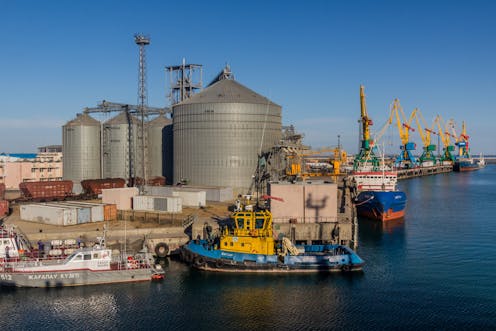How China is increasing its influence in central Asia as part of global plans to offer an alternative to the west
- Written by Stefan Wolff, Professor of International Security, University of Birmingham

As G7 leaders[1] were preparing for their recent summit in Japan, China’s president Xi Jinping hosted his central Asian counterparts from Kazakhstan, Kyrgyzstan, Tajikistan, Turkmenistan and Uzbekistan.
Central Asia is critical to China’s attempts to build an alternative to the US-led liberal order that is unquestionably dominated by Beijing and in which Russia will, at best, be a junior partner[2].
In his opening address, Xi outlined[3] his “vision of a China-central Asia community with a shared future”. This will rest on four principles: mutual assistance, common development, universal security and everlasting friendship.
While the relationship between China and central Asia is often framed in terms of security and development, it also has a political side. This is all evident in the initiatives to create more regional cooperation launched at the summit in Xi'an.
These propose links between Chinese ministries and government agencies and their counterparts in central Asia, increasing educational and cultural exchanges, and creating mechanisms like the Central Asia–China Business Council. All of these are likely to further consolidate of China’s dominant regional role.
In return, China will insulate the mostly authoritarian leaders[4] of central Asia from western economic and political pressure to move towards democracy and protect their sovereignty and territorial integrity against any Russian adventurism.
Summit achievements
The summit resulted in a staggering 54 agreements, 19 new cooperation mechanisms and platforms, and nine multilateral documents, including the Xi'an declaration[5].
Even if one were to discount most of these as having uncertain prospects of actual implementation, there can be no doubt about China’s regional significance. According to UN statistics[6], for example, the volume of trade in goods between China and the five countries of the region rose from a mere US$460 million (£370 million) three decades ago to more than US$70 billion in 2022 – a 150-fold increase.
Historically, Russia was the main partner for central Asia, harking back to the Soviet period and the first decade after its break-up. But Moscow can no longer match the value of Chinese investments and construction contracts in central Asia, which now totals almost US$70 billion since 2005[7].
China takes over from Russia
A shift towards China is also reflected in the declining importance of Russia’s regional integration project – the Eurasian Economic Union[8] – in comparison to China’s massive global Belt and Road Initiative[9]. This programme of infrastructure investment was launched by Xi in Kazakhstan in 2013 and has since drawn[10] the region closer to China not just economically but also politically.







